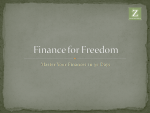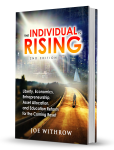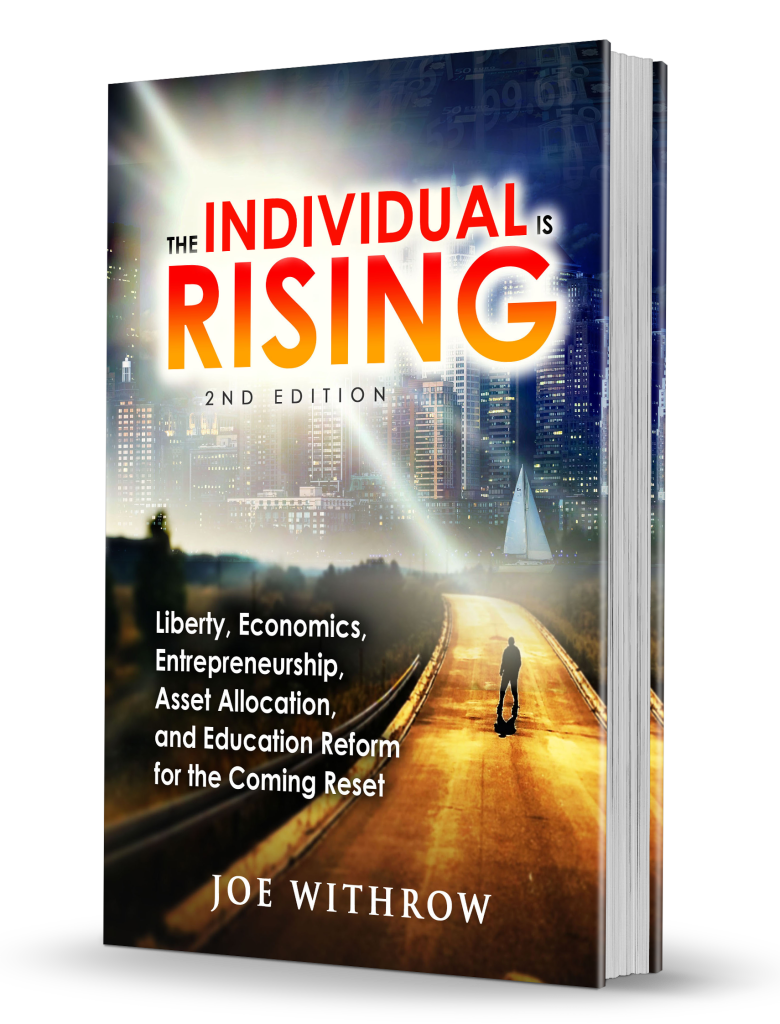This 2-hour program focuses on helping you understand the intricacies of money, finance, and economics in order to master your finances, build your assets, scale your income, and ultimately achieve financial freedom.
Why Finance for Freedom:
The world of money and finance can be confusing and dangerous, and most educational curriculum ignore the concepts altogether. This leaves many successful professionals searching for sound financial advice.
Although there are a plethora of “Personal Finance for Dummies” books and courses out there, Finance for Freedom is the only program that is rooted in a thorough understanding of money and monetary history. Money is half of every transaction thus half of the entire economy therefore it is only possible to construct a sustainable asset portfolio with a fundamental understanding of money.
If you doubt this, simply ask yourself a question: what is money?
Is it a green piece of paper with numbers and symbols on it? Is it a plastic card with a bank logo and an account number? Or is it something else entirely?
As it turns out, money is far from a static functionary, and it has a very interesting story to tell. Those who understand this story take a unique approach to structuring their finances while those who do not understand money tend to follow the herd. If you want to be financially independent then you absolutely must understand money – what it is, where it has been, and where it is going.
Finance for Freedom: Master Your Finances in 30 Days will not only convey the necessary fundamentals, but it will also present specific actionable strategies that you can begin to implement immediately to grow your wealth.
In fact, the strategies presented in Finance for Freedom are the very strategies the author used to master his finances, build a sustainable asset portfolio, and quit his job within five years time. Whether you are a young professional just getting started or a seasoned veteran approaching retirement, these same strategies will work for you.
Are you ready to turbo-charge your retirement portfolio? Do you yearn to exit the rat-race? Is financial freedom calling to your spirit?
This course will convey everything you need to know in order to achieve a level of financial security that can never be taken away from you. This course will show you how to structure your finances and scale your income such that you will never need to worry about market crashes, lay-offs, globalization, outsourcing, or uncertain political environments. More importantly, this course will show you how to reach financial escape velocity so that you can live the life of your dreams!
Here is what the course delivers:
Takeaways:
- How to become money-conscious
- How to analyze your financial statements
- How to intuitively understand how each decision you make affects your financial statements
- How to analyze spending, slash debt, and implement a tool to model and monitor a flexible monthly budget
- How to ultimately master your finances in 30 days time
- How to analyze macroeconomic trends and leverage this understanding into actionable financial strategies
- How to construct and implement an asset allocation model
- How to assess and acquire the prominent asset classes for your model: cash, precious metals, real estate, stocks, bonds, and bitcoins
- How to implement the Beta Investment Strategy
- How to integrate alternative investments into your portfolio to truly create antifragility
- How to build and scale diverse income streams in order to achieve financial escape velocity
Now to be clear, there is no magic formula for eliminating debt, building wealth, and reaching financial escape velocity. As such, this course is NOT for people who are looking for get-rich-quick-schemes. But for self-disciplined people who are willing to think outside of the box and focus long-term, this course offers a comprehensive approach to money, finance, and economics that will enable you to cut debt, strategically build an asset portfolio, and even develop scalable income streams in order to build the life you desire!
Over 2,900 people have already begun taking Finance for Freedom, and the average customer review is 4.7 out of 5.0 stars. In fact, 76% of all reviews have been 5 stars, 19% have been 4 stars, 5% have been 3 stars, and there hasn’t been a single 1 or 2 star review. Here’s what customers are saying:
Customer Feedback:
Carol G.: Comprehensive & Great Learning on Financial Freedom
Finance for Freedom is very comprehensive with great knowledge to use to gain financial health. I understood the concepts and the instruction was easy to follow as well as implement. I enjoyed Joe Withrow’s research and presentation style. I am having my husband take course also so we can act on the ways to improve our family financial future. This course was engaging and interesting as well as practical.
Rachel H.: Powerful!
What a powerful course! I came in knowing very little about finance and now I feel like I am almost an expert! This course is structured in a logical manner that builds upon each topic. It begins with the fundamentals and works its way up to advanced strategies. I would highly recommend!
Grant W.: A great comprehensive guide to get you in control of your finances!
This course does a really nice job of explaining the ins and outs of money and the economy in a simple way that never got overwhelming – a tricky thing to accomplish when talking about finances! You’ll leave the course feeling like you have a much better understanding of your money, where it goes, and what to do with it. And best of all, Joe gives great actionable tips that will get you on your way to achieving financial freedom–the dream!
Who Will Benefit From This Course:
- Are you new to personal finance? This course will start with the fundamentals and work up to advanced topics.
- Are you looking for an out-of-the-box perspective on money and finance? This course will deliver what conventional finance misses to give you a competitive advantage in the real world.
- Are you well-versed in personal finance but looking for advanced strategies? This course will show you how to leverage prominent macroeconomic trends to scale your income and build wealth.
- Are you a young professional just getting started in your career? This course will show you exactly how to master your finances and start planning for retirement.
- Are you stuck in an unfulfilling career? This course will show you exactly how the author managed to build a sustainable asset portfolio from scratch and quit his job in five years.
- Are you a veteran approaching retirement? This course will show you how to secure your finances, structure your assets in a conservative way, and set yourself up for a worry-free retirement.
Get This Course Now:
So how much does it cost to learn everything you need to know to master your finances, construct a sustainable asset portfolio, and achieve a level of financial freedom that most people can only dream of?
This course originally retailed for $79, and based on customer satisfaction it is probably worth a fair amount more than that. But that’s not the price you will pay today. For a limited time you can get Finance for Freedom: Master Your Finances in 30 Days for the low price of $24!
The course material is 100% video based, and it includes PowerPoint slides and several spreadsheets as supplemental material. To add even more value to this course, the instructor is completely willing to answer any and all questions you may have as you go through the material.
Finance for Freedom: Master Your Finances in 30 Days comes complete with a 30 day money-back guarantee. If you are not 100% satisfied with the course for any reason at all we will issue a no-hassle refund immediately.
Do not take a backseat when it comes to your own finances. Learn everything you need to know to master your finances in 30 days by enrolling in Finance for Freedom today to take advantage of this limited offer!

Click here to be routed to the Udemy sales page.
Purchase with PayPal here:
Purchase with Bitcoin here:
Course Curriculum:
Section 1 – Financial Freedom Begins with a Mindset
- Introduction
- My Background
Section 2 – What is Money?
- What is Money? (Preview Available Below)
- Types of Money?
- Monetary History
- U.S. Dollar Today (Preview Available Below)
- Key Takeaways
Section 3 – Maximize Capital; Minimize Crap
- Become Money Conscious
- Your Financial Statements
- Master Your Finances in 30 Days
- Financial Analysis Spreadsheet Screencast
Section 4 – Macroeconomic Trends
- Understanding Macroeconomic Trends
Section 5 – Building Wealth
- Asset Allocation
- Cash
- Precious Metals
- Real Estate
- Stocks
- The Beta Investment Strategy
- Bonds
- Bitcoin
- Asset Allocation Example
- Alternative Investments
Section 6 – Putting It Together
- Putting It Together
Section 7 – Financial Escape Velocity
- Financial Escape Velocity
Section 8 – Conclusion
- Conclusion
Section 9 – Bonus Offer
- Bonus Offer














